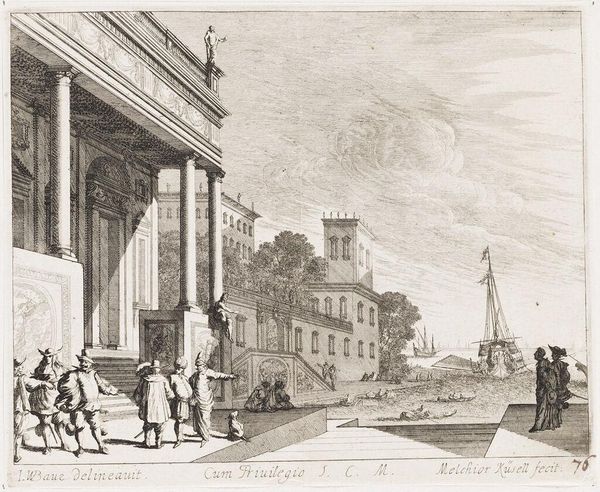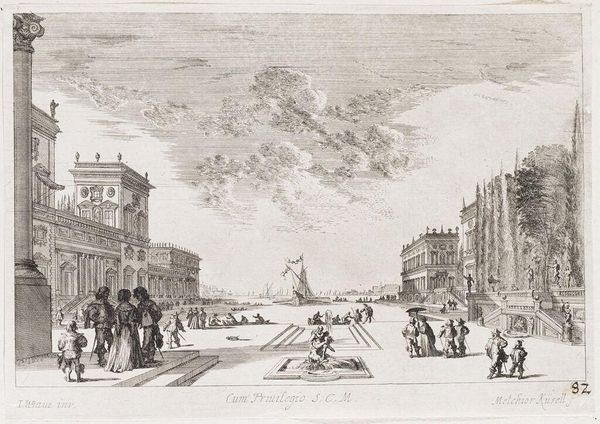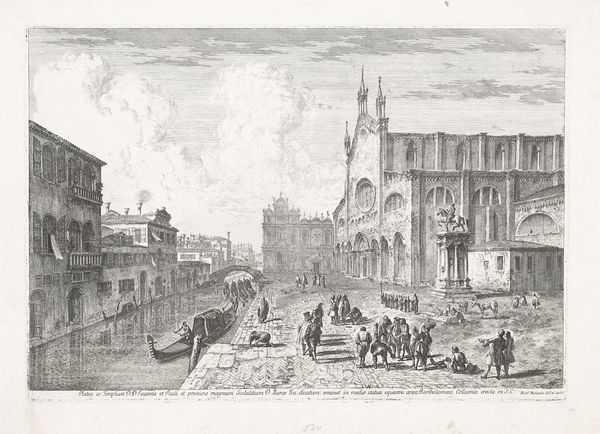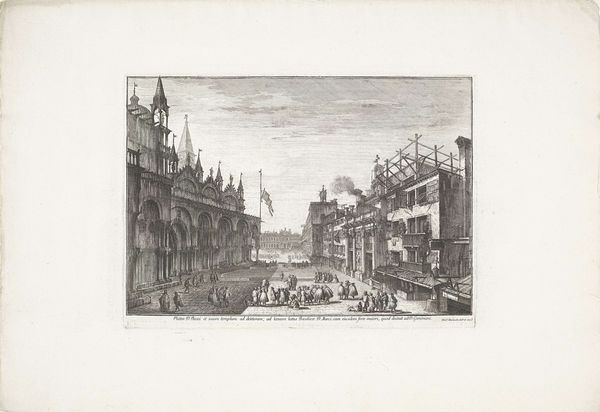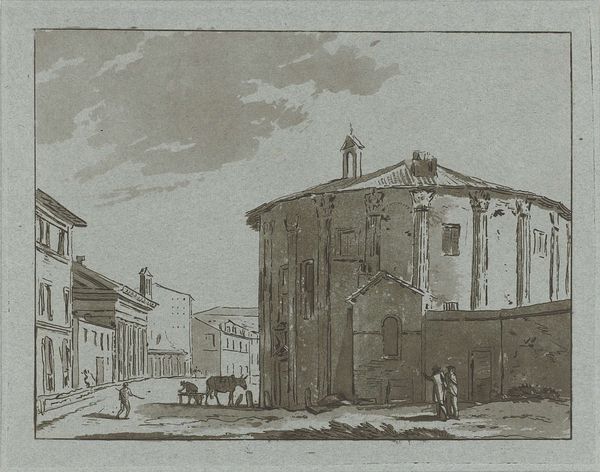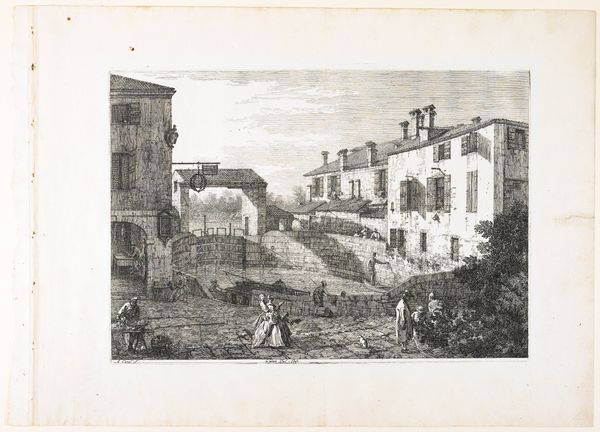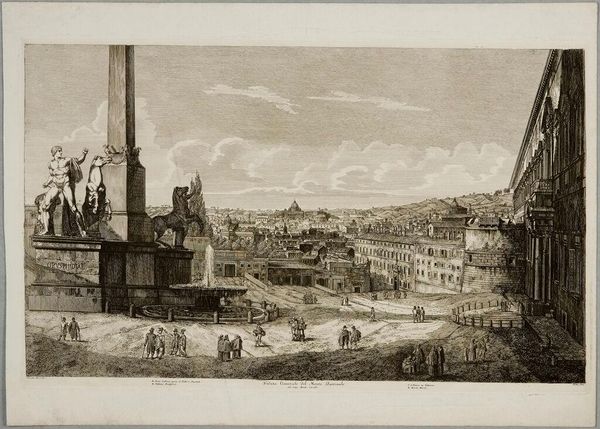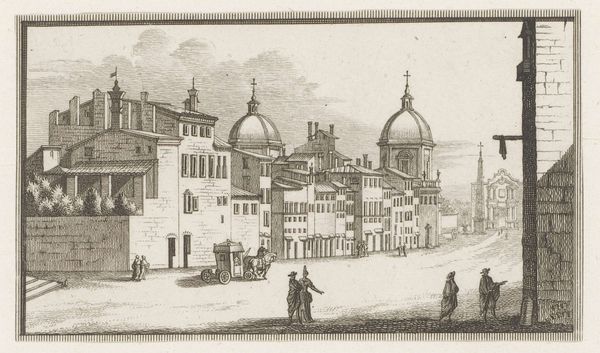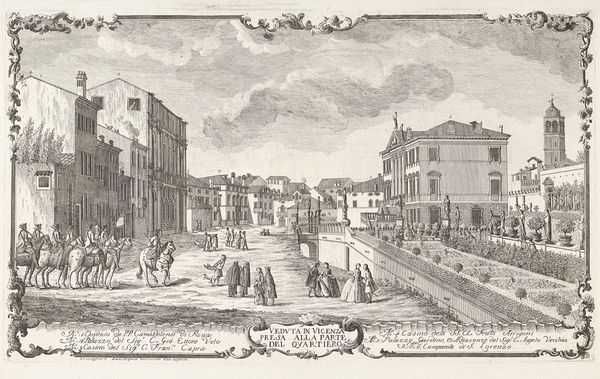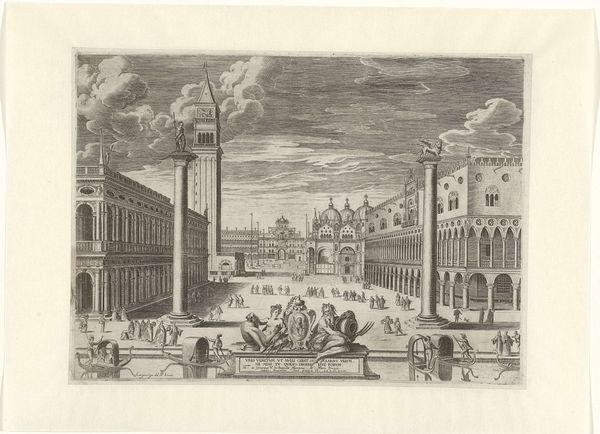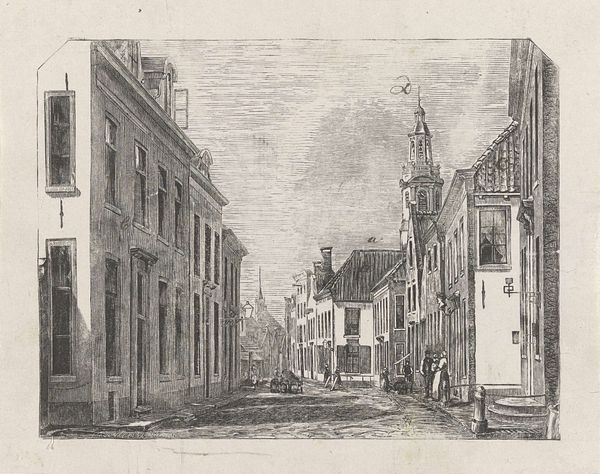
drawing, print, pen, engraving
#
drawing
#
venetian-painting
#
baroque
# print
#
pen sketch
#
pen
#
cityscape
#
italian-renaissance
#
engraving
Dimensions: height 311 mm, width 475 mm
Copyright: Rijks Museum: Open Domain
Curator: What do you see in Michele Marieschi's "Porta Magna van het Venetiaans Arsenaal" from 1741? It's a drawing, a print, rendered in pen and engraving, now at the Rijksmuseum. What captures your eye? Editor: It’s quite detailed for a pen sketch. The number of figures, the ships in the background... It feels very much like a moment captured in time, but also grand, almost staged, because the eye is drawn to the gate. I'm curious, how should we interpret such a detailed cityscape from this period? Curator: Think about Venice at this time. The city was a major power, but facing increasing competition. This gate, the Porta Magna, wasn't just an entrance; it was a symbol of Venetian power and maritime dominance. The inclusion of the ships is key here; this isn’t just about aesthetics, it’s about demonstrating naval strength. And it is rendered with incredibly delicate marks made by the pen. Editor: So, it’s like propaganda, almost? This powerful gate, filled with these statues... The artist uses it to reinforce the might of Venice? Curator: Exactly. Marieschi is not merely depicting a scene, but carefully constructing an image of Venice's identity. The social and historical contexts, how Venice wanted to be seen versus its reality, those are crucial. Consider too, who commissioned this piece? What message were they trying to convey about Venetian society and its role in the world? Editor: It's fascinating to think of art as this subtle form of political messaging. I hadn't really considered how deliberate these cityscapes could be. Thank you, I am seeing so much more here now! Curator: Indeed. Looking closely at the symbols and historical context in a work is a great tool of visual analysis and helps expose the many stories the artist has to tell.
Comments
No comments
Be the first to comment and join the conversation on the ultimate creative platform.
